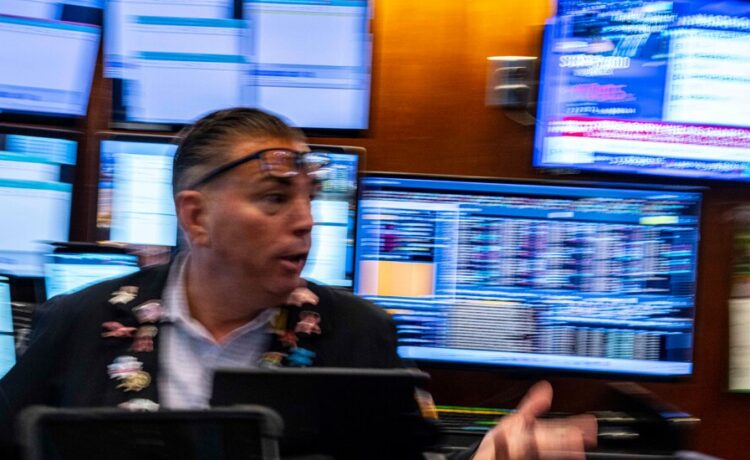Stocks on Wall Street ended a volatile week with a bounce on Friday, while government bond markets continued to signal investor worry about the impact of new import taxes, as China raised its tariffs on American-made products to 125 percent.
The S&P 500 fell as much as 0.9 percent in morning trading before rallying through the afternoon to a gain of 1.8 percent, taking the week’s rise to 3.8 percent. Last week, the index recorded its worst tumble since the 2008 financial crisis.
Markets around the world have veered sharply between large gains and losses amid the turmoil and confusion caused by President Trump’s pronouncements on tariffs.
“We know what the issue is,” said George Goncalves, head of U.S. macro strategy at MUFG. “We have heavy-handed tariffs and now we have an impact between the U.S. and China, and that’s not good for activity and planning.”
In the government bond market, the 10-year Treasury yield rose again on Friday, taking its gains since last week to roughly 0.5 percentage points, a huge move in a market that underpins corporate and consumer borrowing. The U.S. dollar slumped 0.9 percent on Friday, to its lowest level in about two years.
Analysts at ING noted that there was a “confidence crisis” in the dollar as U.S. assets lost some of their haven appeal.
All week, markets have been whipped around by the varying intensity and focus of Mr. Trump’s trade policy. Steep “reciprocal” tariffs were imposed on dozens of countries and then, hours later, paused for 90 days. At the same time, the United States and China ratcheted up tariffs on the trade between them.
On Thursday, the S&P 500 index slumped 3.5 percent after the Trump administration clarified that tariffs on Chinese imports totaled 145 percent, not 125 percent as it had said the day before. A day earlier, the benchmark index had surged 9.5 percent as Mr. Trump delayed the rollout of high tariffs on dozens of countries.
Laurence D. Fink, chief executive of the giant asset manager BlackRock, reiterated his call on a recession. The United States is “very close, if not in a recession now,” he said on CNBC. “The market is also underestimating how high inflation can get.”
In the latest survey by the University of Michigan, consumer sentiment plummeted again in April as expectations for inflation surged. In the year ahead, respondents expect inflation to rise to 6.7 percent, the highest outlook since 1981 and a sharp acceleration from 5 percent in March. Expectations for longer-run inflation climbed to 4.4 percent in April.
On typical trading days, stock indexes post modest gains or losses, but over the past 10 days, the S&P 500 has suffered some of its steepest declines as well as its biggest one-day gain since the 2000s. Traders are betting this will continue. The VIX index, a measure of volatility known as Wall Street’s fear gauge, rose to levels last seen during the early days of the coronavirus pandemic in March 2020. The VIX is derived from trading in options — or bets on future moves — in the S&P 500, so it rises when options investors anticipate greater swings in the index.
The turmoil has extended into a wide variety of assets, and the government bond sell-off — at the same time as declines in stocks and the U.S. dollar — has puzzled traders and analysts. Some speculation has focused on whether heavy losses in the stock market have led investors to sell their bond holdings, or whether a foreign central bank is selling U.S. assets.
Through Friday, the S&P 500 still sat more than 12 percent below its latest peak in mid-February.
Jamie Dimon, the chief executive of JPMorgan Chase, said on Friday in a call with journalists that his bank was concerned about the rise in Treasury yields and was looking at the bond market “every minute.”
By the close of trading on Friday, the 10-year U.S. Treasury yield was close to 4.5 percent, its highest level since February.
“It’s a different U.S. investment environment,” Mr. Goncalves said, noting the challenging trading conditions that have arisen from a rapidly shifting tariff environment.
“It’s almost like we are on ‘The Apprentice,’” he said, referring to Mr. Trump’s former reality-TV series. “There are elements of a reality show going on in real time.”
Rob Copeland and Maureen Farrell contributed reporting.



